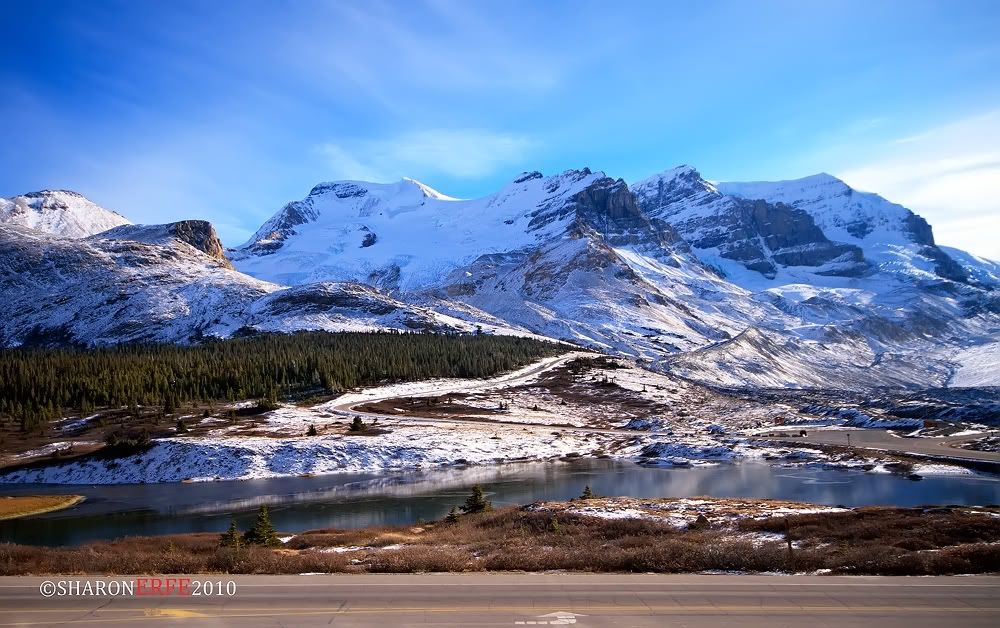Midway between Jasper and Banff is one of the most popular attractions in Western Canada.
Athabasca Glacier is part of the masssive Columbia Icefields which are a vast reservoir of ancient water. The Icefields are the source of the headwaters of three rivers that flow to three different oceans (Arctic, Pacific and Atlantic). Nowhere else on Earth can you find such a phenomenon.
As the glaciers melt they are also sliding down the mountain sides and as they do so are crushing vast amounts of prehistoric rock into a fine powder, called rock flour. This powder floats into nearby lakes and rivers. It becomes suspended in the water and reflects light to our eager eyes. The colors are stunning and are different shades of blue, green and grey. Colors vary at different times of day and from lake to lake. It is a remarkable display that nature puts on for lucky travelers to the Canadian Rocky Mountains.
Some cold hard facts.
* It covers 325km squared – making it comfortably the largest body of ice in the Rocky Mountains
* Its highest point is Mt. Columbia at 3745 m (12,284ft)
* The average elevation is 3000m (10,000 ft)
* The greatest estimated depth is 365m (1200 ft)
* The average snowfall is 7m (23 ft) every year.
* Uniquely it drains into the Pacific, Arctic and Atlantic Oceans.
Some cold hard facts.
* It covers 325km squared – making it comfortably the largest body of ice in the Rocky Mountains
* Its highest point is Mt. Columbia at 3745 m (12,284ft)
* The average elevation is 3000m (10,000 ft)
* The greatest estimated depth is 365m (1200 ft)
* The average snowfall is 7m (23 ft) every year.
* Uniquely it drains into the Pacific, Arctic and Atlantic Oceans.
The Columbia Icefields are considered one of the largest accumulations of ice and snow south of the Arctic Circle, and can reach depths of 2,000 feet.

No comments:
Post a Comment